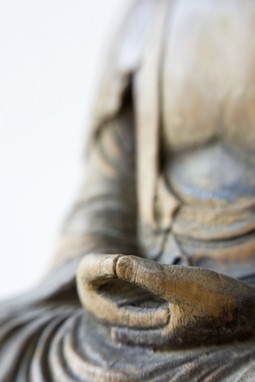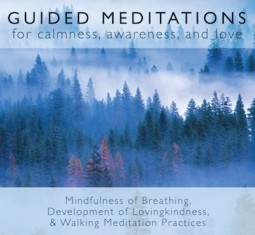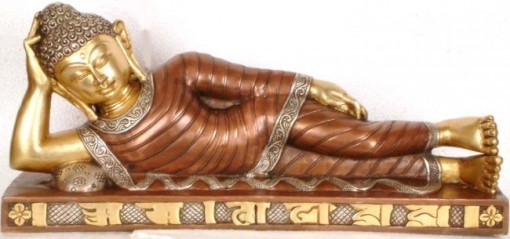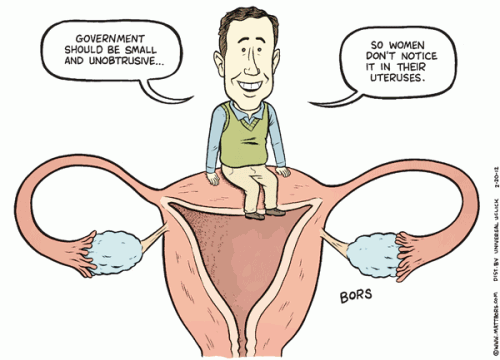Bodhipaksa's Blog, page 75
March 14, 2012
The latest eye candy at the Newmarket Mills.
 2FE7B677-15B0-4C4A-9249-AF8DB9CC7BAC.JPG
2FE7B677-15B0-4C4A-9249-AF8DB9CC7BAC.JPG
 55B95878-3DEA-40BB-A0FB-7C70B4C3C360.JPG
55B95878-3DEA-40BB-A0FB-7C70B4C3C360.JPG
March 7, 2012
Reshared post from John Pozadzides
IF Apple announces the iPad3 right now, here today… I'll …
March 3, 2012
Reshared post from John Herman
SEND JOHN HERMAN TO SPACE
I am one of the 20 final candidates…
How to meditate lying on your side
I have a vertebra that tends to slip out of alignment. Regular visits to my chiropractor keep it in place and prevent too much discomfort, but when I'm on retreat my back sometimes gets so painful that I have to lie down to meditate.
When I first had to do this on retreat, the posture that was suggested was the Alexander semi-supine position, where you lie on the back, with the knees bent and the feet flat on the floor, and the head raised on a cushion.
This is comfortable, but it's very hard to stay alert in this position, and I'd tend to fall asleep. Even if I didn't fall asleep my head would feel fuzzy. Recently I've been experimenting with a more traditional — and badly neglected — approach.

Miniature statue of the Buddha lying down to meditate
Oddly, very few people seem to try meditating lying on their side, even though images of the Buddha doing this are abundant. This may be because the Buddha passed away while meditating on his side, and when people see statues depicting this posture they don't think "that's the Buddha meditating on his side" but "that's the Buddha dying." So the connection between this posture and meditation tends to get lost.The Buddha didn't lie down this way only when he was dying. He lay down like this often when he was meditating. In fact this is how he advised monks to go to sleep, so that they could be mindful right up to the last moment. So this is a meditation posture in which the Buddha happened to die, not a special posture for Buddhas to die in!
Actually the Parinirvana (death) statues and the meditation statues are different. In death, the Buddha's hand is no longer supporting his head. In the image above you can see that the Buddha is clearly alive!
This is actually quite a comfortable posture to meditate in. I've used this when I've been sick, or when I've wanted to meditate at the end of the day and have felt physically exhausted. Here are some basic pointers:
Lie on your right side.
You'll need to have some cushioning under the whole body. You can lie on a mattress or a couple of zabutons (meditation mats) laid end-to-end or even a folded blanket or two.
The left arm rests on top of the body.
The right elbow rests on the floor, with the hand supporting the head.
The knees should be slightly bent. Bend the upper knee a little more than the lower knee so that there isn't undue pressure between your ankles and between your knees.
You'll need to have a cushion under your right armpit or upper chest, to take some of your body's weight.
The pressure of your hand on your head may cause discomfort, so you'll probably need to move your hand from time to time. Be aware of the intension to move, and be mindful of the movements themselves.
If you have neck problems this posture is not recommended, but for most back problems it should be fine.
Someone on Facebook said that she found this a good way to meditate during her pregnancy, and that she'd meditated lying on her side for six months. But (see the comments below) it's probably a good idea for pregnant women to lie on the left, rather than the right, side.
In this position you're far less likely to fall asleep compared to when you lie on your back, and it's easier to maintain a sense of mental clarity.
Is this a posture you're tried out? Have any advice? Please feel free to leave a comment below.
March 2, 2012
"It can wait." A mantra for the 21st century.
 You're in the middle of a conversation with a friend, and your phone rings. You stop mid-sentence and suddenly you're caught up in a phone call. You don't even think about whether or not to pick up the call. It just happens.
You're in the middle of a conversation with a friend, and your phone rings. You stop mid-sentence and suddenly you're caught up in a phone call. You don't even think about whether or not to pick up the call. It just happens.
You're in the car and you hear the ping of a text message arriving. What do you do? Many people succumb to temptation and read the message and — worse — reply to it. (You can recognize those people; they're the ones in front of you, swerving out of their lane without even realizing it.) Even if you try to ignore the incoming message, you can feel its emotional pull, as if your phone is an emotional black hole, drawing your attention inexorably toward it.
These distractions are hard to resist. How can we reclaim our attention in this world of email alerts, text message alerts, phone calls, IM alerts, and Facebook notifications?

If you like Bodhipaksa's writing, check out his books, CDs, and MP3 guided meditations.
I've found one simple way of regaining control of my attention. It's a simple phrase: "It can wait."
This is a phrase I use both in my meditation practice and in my daily activities. When I feel the urge to look at my phone while I'm driving, even if it's just to remind myself of the name of the song that's playing, I say "It can wait." This simple phrase makes it easy for me to keep my attention where it belongs — on driving safely.
"It can wait" is a reminder of what's important. The text message, email, or phone call will still be there when I arrive at my destination. I can deal with it then. Right now what's important is getting to my destination safely. (In theory the song is still there, but in practice I'll forget to do the detective work necessary to figure out what the track was. Which just goes to show how important it was in the first place to have that information!)
In my meditation practice I sometimes find myself getting caught up in some train of thought. Sometimes they're compulsive. Right now I've just moved into a new office and we're making some changes at work, so I find myself planning how we're going to use the space, how we can set up better organizational systems etc. It's all creative stuff. But it's not what I want to be doing in my meditation practice! So I say, "It can wait." And again, I find it relatively easy to let go of the train of thought. Sometimes it'll come back a few times, but I keep saying "It can wait" and the planning part of my mind eventually gets the message.
"It can wait" becomes a powerful statement of affirmation in the importance of the present moment. I find myself planning? "It can wait." Right now I'm just going to be with my present moment experience. I'll find happiness by surrendering to the present moment, not by arranging the future in my mind.
So I offer this to you as a practice that I've found to be simply and effective. When you need to be focused on the present moment and an emotional black hole appears and tries to steal your attention, just say "It can wait" and embrace the present moment in mindful awareness.
February 29, 2012
Yup. Obama's going to win this election.
February 28, 2012
Reshared post from John Herman I have a very real opportunity to go to space.But I need your…
Reshared post from John Herman
I have a very real opportunity to go to space.
But I need your…
February 27, 2012
"You yourself, as much as anybody in the entire universe deserve your love and affection."
I've obviously become the "go to guy" for Fake Buddha Quotes. Jake Moskowitz just wrote asking about this one, which he thought was "strange."
"You can search throughout the entire universe for someone who is more deserving of your love and affection than you are yourself, and that person is not to be found anywhere. You yourself, as much as anybody in the entire universe deserve your love and affection."
I think Jake was right to sense that something was "off" about this. In the Buddha's teachings, that one has lovingkindness for oneself is taken as read , and the emphasis is on extending our concern to others.
The first signs of this quote that I found in print are in two books that were published at about the same in early 2001: John Amodeo's The Authentic Heart, which is "An Eightfold Path to Midlife Love," and Laura Doyle's The Surrendered Wife: A Practical Guide for Finding Intimacy, Passion, and Peace with a Man.
I'm getting a little off-topic here, but I learned that The Surrendered Wife "is a step-by-step guide that teaches women how to give up unnecessary control and responsibility, resist the temptation to criticize, belittle, or dismiss their husbands, and to trust their husbands in every aspect of marriage — from sexual to financial."
I'd buy my wife a copy, but she'd probably hit me with it.
Anyway, given that these books were published more or less simultaneously, it seemed reasonable to assume that there was an original precursor. With a little digging around I found that Sharon Salzberg included essentially the same quote in an article in a magazine called "Woman of Power." My only source for this is Google Books, which doesn't show me the entire quote, or an exact date for the edition the article appeared in, but it was likely the early 1980′s.
The original would seem to be in the Udana of the Pali canon, where we read, in Bhikkhu Thanissaro's translation,
Searching all directions
with one's awareness,
one finds no one dearer
than oneself.
In the same way, others
are fiercely dear to themselves.
So one should not hurt others
if one loves oneself.
So the purpose of the original is to emphasize having lovingkindness towards others, not towards ourselves. The import of the Salzberg version has been reversed, to suggest that because others deserve love, so too do we. We of course should have lovingkindness towards ourselves, so there's no argument with the message — it's just that that's not what the quotation says.
Related posts:
Learning to love the flaws
More Lana Del Rey. Love it.
Love these stamps
February 25, 2012
Government should be small and unobtrusive…
Related posts:
Keeping the government out of your bedroom
On killing a small bird
Canada's Orwellian Approach to Climate Science. "The [Canadian government] protocol requires that…

 098C1CF8-D291-4461-B55F-694AB28DE7B4.JPG
098C1CF8-D291-4461-B55F-694AB28DE7B4.JPG A48D56DA-337F-4B75-8D98-16DF4E3389D2.JPG
A48D56DA-337F-4B75-8D98-16DF4E3389D2.JPG





